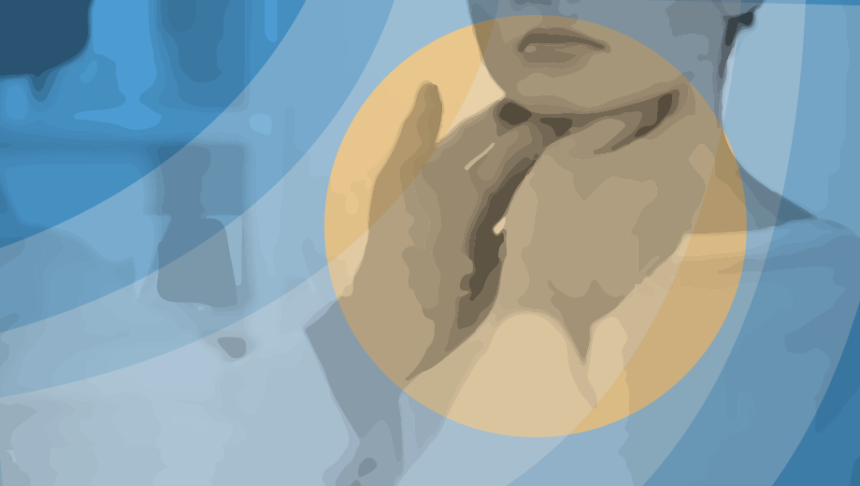Most thyroid nodules don’t cause any symptoms or need treatment, but some can be malignant and require surgery.
Thyroid nodules, which are lumps that develop within the butterfly-shaped thyroid gland at the base of the neck, are very common. About half of all people have a thyroid nodule by the time they are 60 years old.
Sometimes thyroid nodules are large enough that you can see a lump in the neck with the naked eye or feel them with your fingers, but they can also be so small that they are only found after an ultrasound.
“Fortunately, most thyroid nodules don’t cause any symptoms and don’t require treatment,” says Karla Pou, MD, an endocrinologist at UNC Medical Center who sees and evaluates patients with thyroid nodules. In those cases, the person will return to the doctor months later for a checkup.
“However, in some cases thyroid nodules can be a sign of a much more serious problem, such as hyperthyroidism or thyroid cancer, so it’s important to get them evaluated by an endocrinologist as early as possible.”
Hyperthyroidism is a condition in which the thyroid gland produces too much of the hormone thyroxine. This causes a person to have a rapid heartbeat, an increased rate of metabolism and unintentional weight loss. Thyroid cancer causes symptoms such as a lump in the neck (which sometimes grows quickly), swelling or discomfort in the front of the neck, hoarseness or other voice changes that don’t go away, trouble swallowing or breathing, or a constant cough.
How Thyroid Nodules Are Evaluated
People who come to see Dr. Pou at her thyroid nodule clinic are typically referred to her after another doctor, such as a family physician or an ear, nose and throat specialist, has confirmed the presence of thyroid nodules.
A thyroid nodule evaluation includes an ultrasound of the thyroid and an assessment of the patient’s risk factors. Most diseases of the thyroid (including thyroid cancer) occur about three times more often in women (who are most often in their 40s or 50s when diagnosed) than in men (who are usually in their 60s or 70s). People with a family history of thyroid cancer are at higher risk than those with no such family history.
The evaluation also includes a biopsy, in which cells from the thyroid nodule are removed and examined under a microscope. This procedure, called a fine needle aspiration (FNA), is outpatient, performed in a doctor’s office (such as by Dr. Pou) or clinic.
“Many biopsies come back with indeterminant results,” Dr. Pou says, meaning it’s not clear whether the nodule is benign or cancerous. According to the American Cancer Society, only about 1 of every 20 FNA biopsies results in a clear cancer diagnosis.
In such cases, your endocrinologist may choose to order additional tests, such as a more involved biopsy, specialized imaging, or blood tests to help reveal whether your thyroid is working normally. It’s also common in this situation for doctors to recommend active surveillance, which means the nodules are monitored for changes without being treated. During this “watchful waiting” period, patients may return for a follow-up visit with the endocrinologist six to 12 months after the first biopsy or undergo another ultrasound one year after their first ultrasound.
Treating Thyroid Cancer
When a patient is diagnosed with thyroid cancer, surgery is the primary treatment in most cases. Sometimes just part of the thyroid is removed; this is called a lobectomy. But in some cases the entire thyroid gland is removed; the name for this procedure is thyroidectomy.
“It’s very important, before surgery, for the patient to have a comprehensive ultrasound of the entire neck,” Dr. Pou says. That’s so doctors can determine if the cancer has spread from the thyroid gland into the lymph nodes in the neck. If so, the lymph nodes will be removed at the same time as the thyroid gland.
When one of her patients is diagnosed with thyroid cancer, Dr. Pou refers the patient to UNC surgeons Lawrence Kim, MD, or Jen Jen Yeh, MD, for further evaluation and possible surgery.
People who have their entire thyroid gland removed typically need to take thyroid hormone replacement medicine, and may need to do so for the rest of their lives. But people who only have part of the thyroid removed may not need to take hormone replacement medication.
Some people may need additional treatment after surgery, depending on the type and stage of their thyroid cancer. Standard treatment options include radioactive iodine therapy and thyroid hormone therapy. Sometimes there is a need for more aggressive treatment, including external beam radiation therapy and targeted systemic drug therapy.
The good news is that most cases of thyroid cancer are curable, and the overall five-year survival rate for people with thyroid cancer is 98 percent. Early detection is important, though; the survival rate lowers if thyroid cancer spreads to distant parts of the body. It is estimated that more than 52,000 adults will be diagnosed with thyroid cancer this year, and more than 2,000 people will die from the disease.
That’s why people with thyroid nodules should see an endocrinologist promptly to determine next steps.
Learn more about endocrinology treatment at UNC Medical Center. Find an endocrinologist near you.

